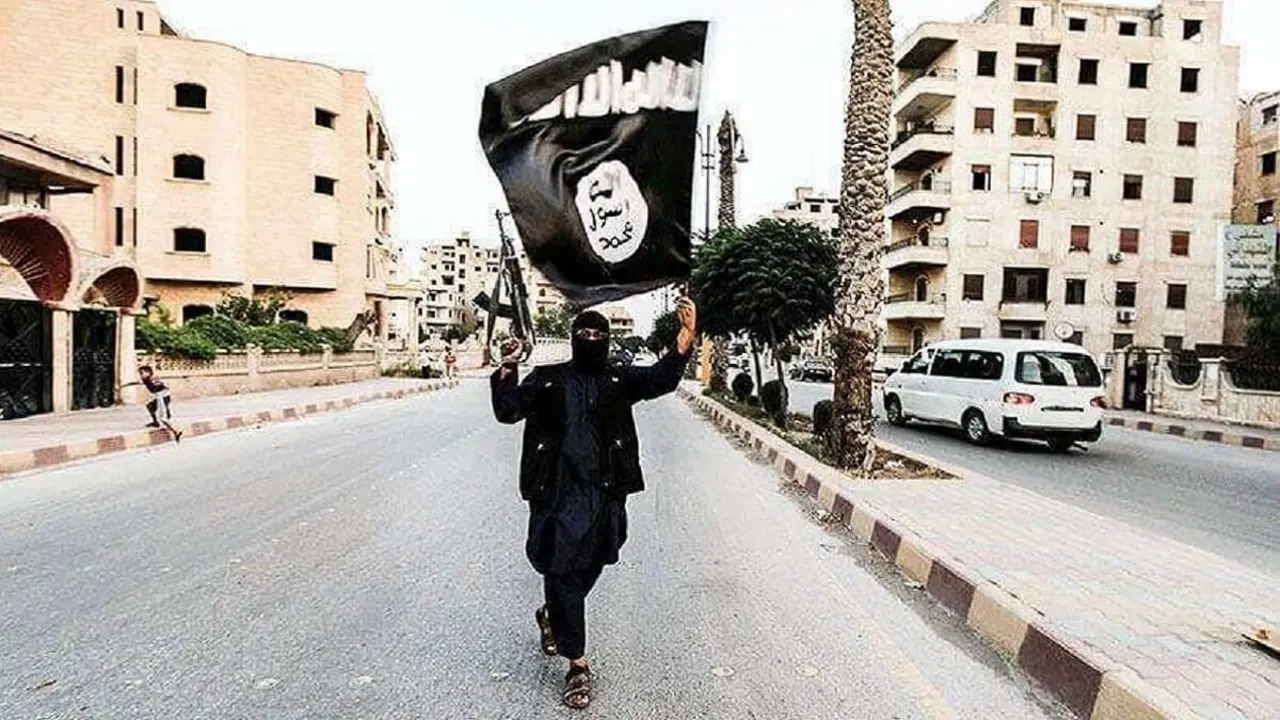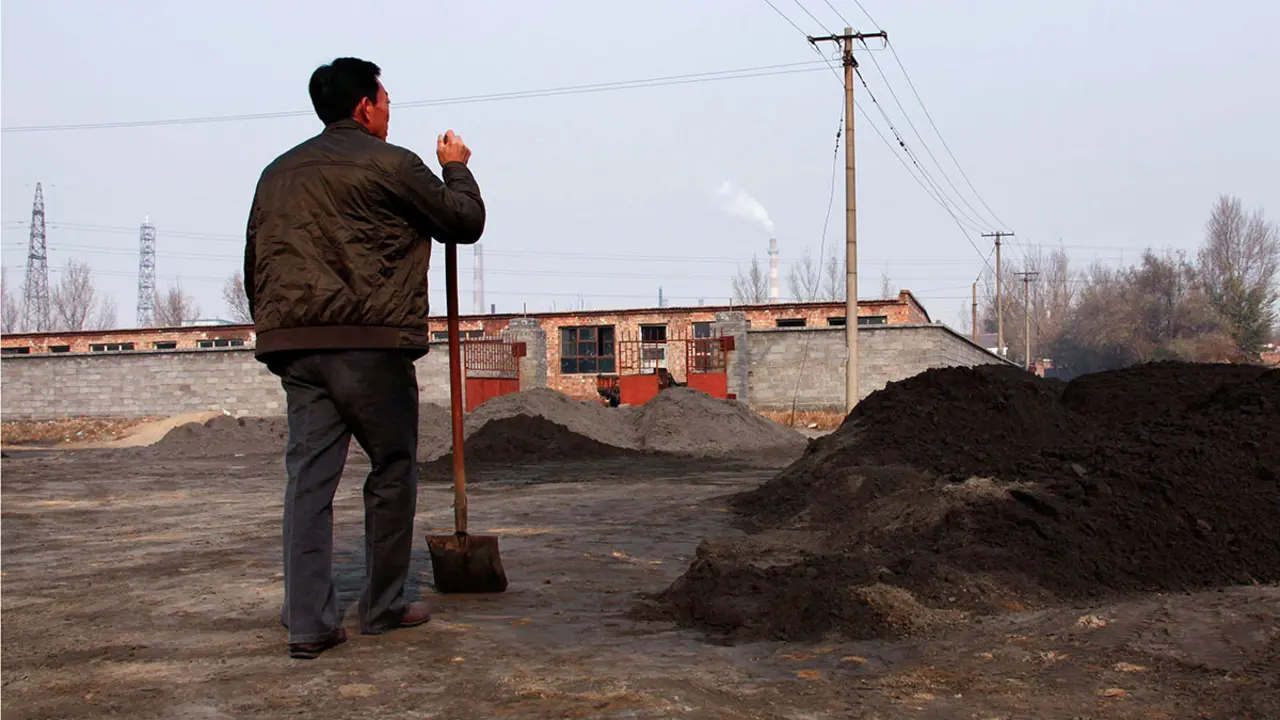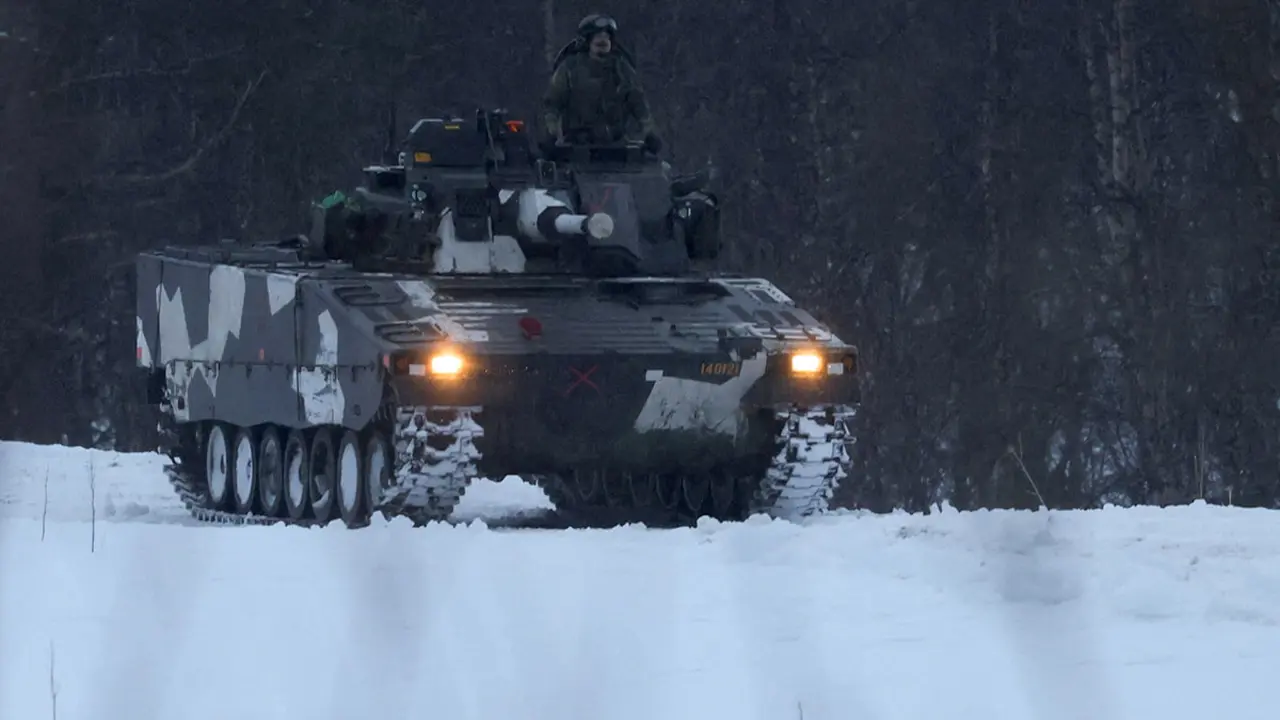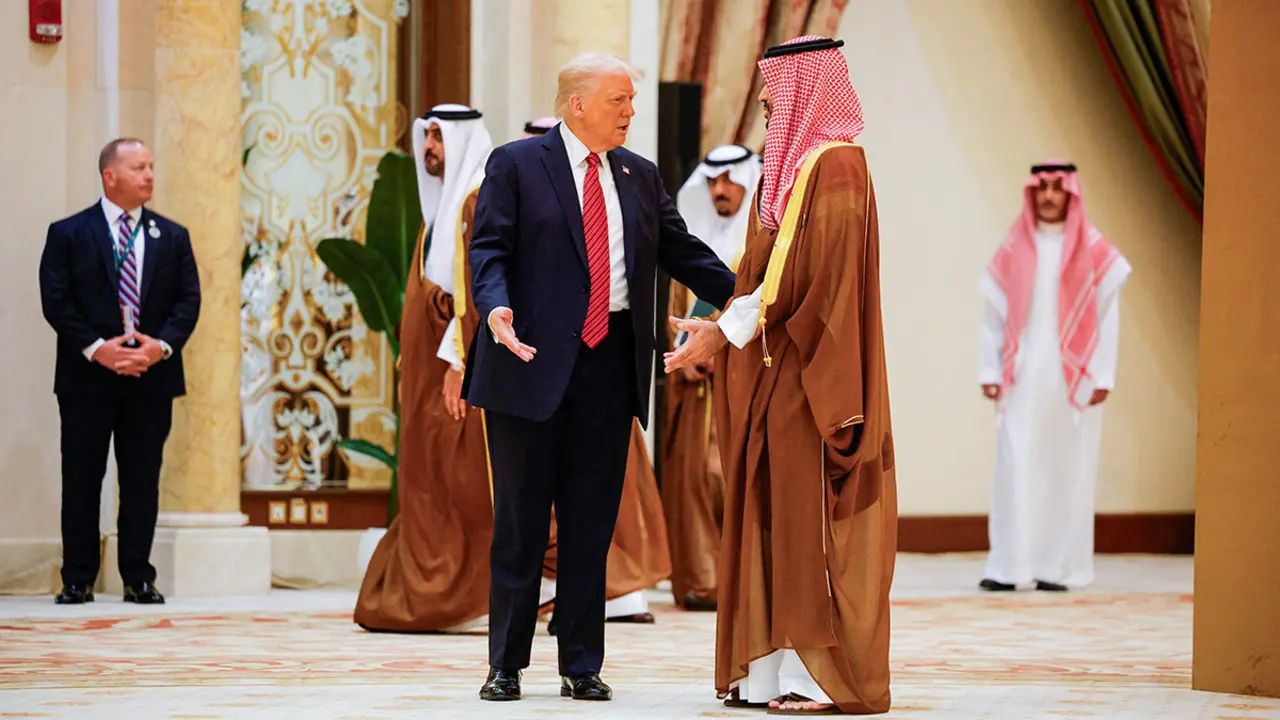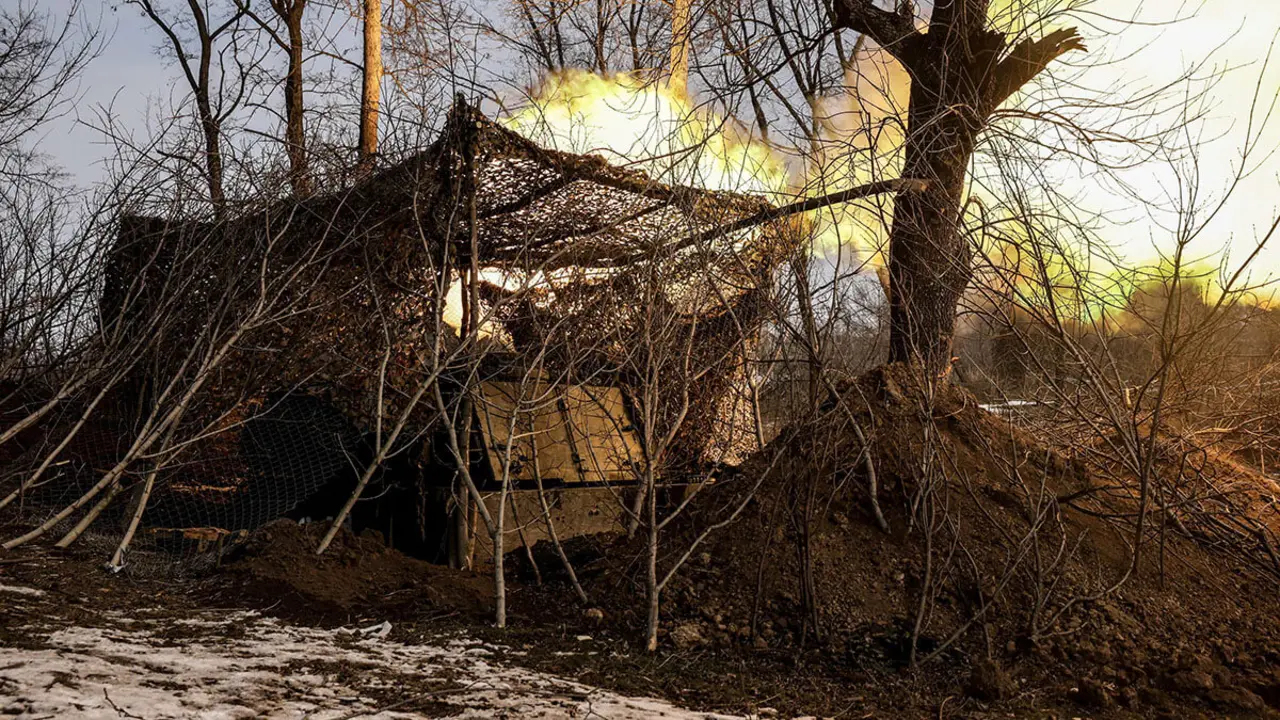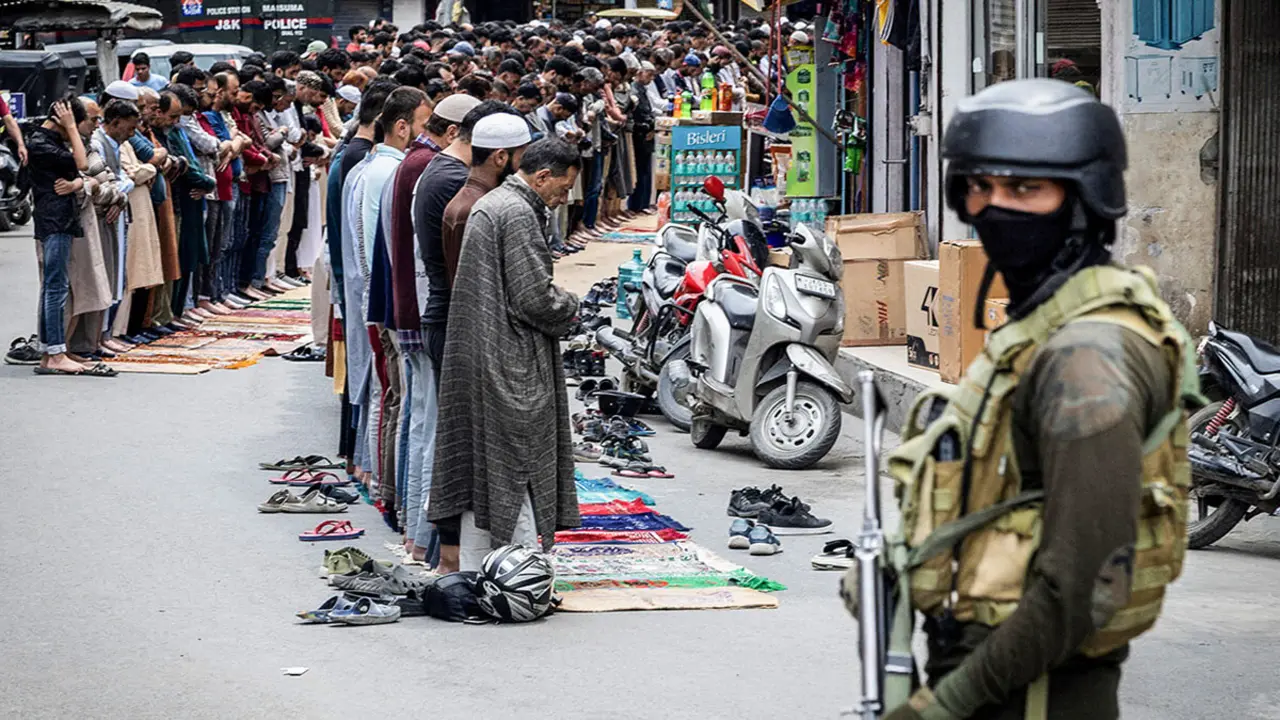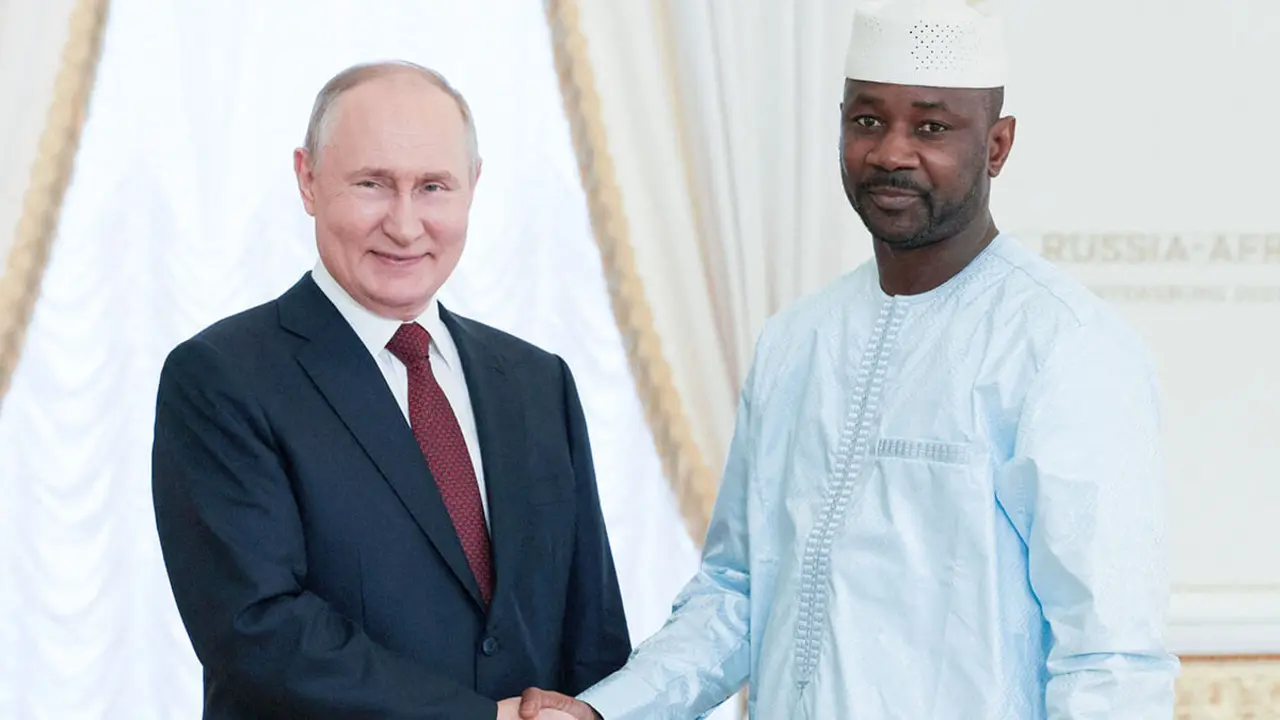Russia and terror propaganda

On the main avenue of Kozacha Lopan, near the Town Hall, a black poplar stands amidst the bombed and charred buildings. It is big, the biggest tree in the whole street. And every time they pass it, one of the few remaining inhabitants of the city looks at it holding their breath.
There doesn't seem to be anything special about the tree to justify these looks of attention. Nothing is extraordinary, until you get within a few metres of it. That's when you see that, instead of leaves and branches, several mobile phones sprouting from its bark.
They are very basic handsets, the kind that can only be used to call and send text messages, and they are bolted to the trunk of the poplar tree with huge rings that the autumn rain has rusted. The Russian soldiers who occupied Kozacha Lopan - for six months - seized these phones from their owners after savagely torturing them.
Amidst beatings, rapes, needles stuck under their fingernails and other atrocities, some residents of Kozacha Lopan eventually confessed to reporting Russian positions or the number of soldiers in the town by phone. The Russians then used their mobiles as a trophy to let the rest of the village know that they had managed to extract one more confession.
Each of the mobiles screwed to the bark of the poplar tree was a warning of what would happen to anyone who collaborated with the Ukrainian army by passing on information. In medieval times - from which the Kremlin's torturers seem to have emerged - human heads were nailed to pikes as a reminder of who ruled the fiefdom. In the 21st century, Russian occupiers nail mobile phones to trees.

The tree of terror is not the only medium used by Putin to spread his pro-Russian propaganda inside Ukraine. On the day that Russia massively bombed Ukraine's power stations, causing a massive blackout, Russian radio could be heard more clearly in the centre of Kharkiv than any local station.
And these were not normal Russian stations, the kind that the population of the Federation listens to, but FM radio stations that the Kremlin set up - more than a year ago - to broadcast Russian propaganda to the Ukrainian population. To this end, it set up high-powered repeaters on the border of Kharkiv and Dombash and designed specific content for listeners on the other side.
Obviously they tune in better the closer you are to the border. But, interestingly, they now have more reach when there are power cuts. As we said, they even reach as far as the capital city of Kharkiv, which is more than 40 kilometres from Belgorod.
These are stations like "Kharkiv Z" or "Radio Life". And their content consists of Russian music, constant appeals to civilians and the military to surrender, and propaganda disguised as news. Some of these news items, which this Atalayar journalist heard on the car radio as she drove along the Russian border, promised "new flats, built by the Russian Federation and with plenty of rooms, for everyone whose house was damaged during the bombing".
Zelensky's government is working to reconnect Ukrainian radio and television in all the territories that are being liberated, but the priority is to rebuild the electricity infrastructure and heating supply channels, so it will take some time to complete the task.
Meanwhile, liberated Ukrainians who are still listening to the occupiers' propaganda over the airwaves have asked volunteers to bring them Medium Wave receivers so they can tune in to national stations.

In addition to radio, the Kremlin uses other traditional means of communication to get its messages across. Russian newspapers also reached Kozacha Lopan during the months of occupation. Newspapers which, like the radio, were written specifically for Ukrainian readers.
But the most twisted thing was not the fact that they disguised their propaganda in the guise of a newspaper, the most twisted thing was the way in which people were forced to take the newspaper in question: the Russians handed it out along with the little food that arrived. If you wanted a loaf of bread, you had to take the newspaper as well.
In the city's town hall, the mayor, Ludmila Vakulenko, has kept some of these publications and other remnants of the Russian propaganda with which they were also "bombarded" from March to September. During those months, Ludmila was in charge of delivering humanitarian aid, always escorted by Russian soldiers, and also had to endure their indoctrination first-hand.
"One of my biggest fears was that they would think I was a collaborationist," she admits. She had to deal with the Russian soldiers, but says that at no point did she cooperate with them, only making sure that her neighbours - the 30 percent who remained - received food. "Most of this food was Ukrainian humanitarian aid, but the Russians forced me to hand it out with their leaflets," she says.
The news reports that can be read in some of the copies that the mayor has kept speak of the progress that Putin's troops were making in Kharkiv and Dombash. They highlighted milestones such as the conquest of Lisichansk and other cities that were taken before the summer.
But they also made sure to convince Ukrainians of the benefits of the Russian Federation, with reports explaining that "refugees' rights are protected in Russia". Under the headline "Russia is here for good. The Russian flag unites people", they tried to get their message across to the population they were torturing and besieging.

Another pillar of Russian propaganda is education. Indoctrinating children is a good strategy, although - fortunately for Ukrainian children - in the occupied territories of Kharkiv they were not able to impart their 'educational programme' for long.
Still, Kremlin soldiers brought textbooks "adapted" to the new reality they wanted to teach - in Russian and rewriting history - to many schools in the occupied cities. Propaganda for children, with lessons on the "great reunification of Crimea with the Russian Federation" or on "extremism and terrorism that shook Ukraine in 2014".
Some Ukrainian teachers collaborated with Russian troops and, although there were no face-to-face classes in most parts of the country, they distributed these books to schoolchildren's homes. The Prosecutor's Office in Kharkiv denounced that "the occupants tried to Russify the students, eradicating any traces of Ukrainian identity; they wanted to start the school year in the occupied towns and villages of the region according to Russian curricula and the educational standards of the aggressor state".
In the town of Balakliya, the secretary of one of the schools shows Atalayar the classrooms where Russian soldiers were living for six months. "Here, the classroom classes were suspended when we were invaded, but they occupied the schools and used them as barracks," Lylia explains.
In one of the school's classrooms, she shows us a disturbing drawing that still remains on the blackboard. A Russian soldier with angel wings receives a flower from a Ukrainian girl. Just above it is written "24 February. Class assignment". No more classes were held there that day, and most of the children fled to the west. But the soldiers who occupied the village drew this picture.
"During all those months, when interacting with the local population, the Russian soldiers said things like it was important for Ukrainian children to learn to sing the Federation anthem," Lylia adds.

When Putin's troops fled, they left their books behind. What they did not leave behind were the centre's electronic devices. From computers to projectors. They stole absolutely everything.
Away from the front line, another war is being waged for the control of information, or rather disinformation about the invasion of Ukraine. And unlike what is happening in Kharkiv or Kherson, Russia is winning on this other front.
The Kremlin has invested a lot of time and money in weaving a network of 'ideological satellites' through which to deliver its message beyond its borders. One of the best-known satellites is Russia Today, the Kremlin's Spanish-language news channel.
With large delegations - where communicators with above-average salaries work - located in countries such as Argentina, Mexico and Venezuela, and whose job is to amplify the Russian Federation's message both on television and on social networks, they once again disguise their propaganda as news.
Everything is studied. From the language they use, to the recruitment of renowned journalists to give credibility to their message. Always referring to the war in Ukraine as a "special operation", rewriting historical events, and even presenting the invader as a victim, claiming that "Russophobia" is being promoted in Ukraine. Anything goes.
Parallel to Russia Today, there is also an army of pro-Russian pseudo-influencers working tirelessly on social media. From Twitter to TikTok to YouTube. In some cases they are paid, in others they aspire to be paid, so they are extremely active. Their function is to flood these platforms - through which most young people are informed - with pro-Russian and anti-NATO messages. In addition to attacking those profiles that denounce the war crimes that Russia is committing in Ukraine.
These are the so-called bots. And they have managed to sow so much noise on social networks that they have managed to make the unspecialised reader doubt the facts that are happening, or even whether the invasion of a sovereign country like Ukraine is justified. Bots replicate Russian propaganda as if it were truthful information, and can discredit real information by posting thousands of messages repeating the lie.
Ukraine is a 20th century war being fought in the 21st century, with new technologies playing an important role. Thus, the battle for control of information is being fought both in the traditional media and in the new online channels - where, by the way, propaganda is much more difficult to identify.

